Butterflies And Moths - Tumblr Posts
Saturniid Moths
(aka those moths with the eyes)

Moths from the Saturniidae family are probably the most well known moth species around. This family has approximately 1500 species distributed worldwide, although they're more common in tropical areas. They have these fake eyes that they don't display when at rest, but when disturbed, they flap their wings, displaying eyes made to mimic owl or snake eyes, and that gives them enough time to escape their predators. These eyes are easily their most recognizable feature. They also have very large wings, the largest saturniid has a wingspan of up to 30 cm (but we'll talk about that later). They are mostly nocturnal, and easily attracted to light, although some are diurnal. Adults cannot eat because their mouthparts don't function. In some places, their caterpillars (like the mopane worm) are eaten.
Check out this interesting diagram of Saturniidae moth sizes in Indiana. It should give a general idea of how big most Saturniidae are.

Some iconic saturniids include:
The Io moth (Automeris io)

These guys are sexually dimorphic, the male is the yellow one the female is the brown one above it. They have unusually large eyespots even for saturniids. They are distributed across Canada, the US and Mexico.
The Luna moth (Actias luna)

Pictured here is a male luna moth, luna moths are sexually dimorphic and the females look similar although more triangular in shape. Fun fact: the 'tails' on their wings are there to help reduce predation as bats will chomp on them instead of, for example, a main part of their wing which may prevent them from flying and/or enable the bat to have better grip on them and just eat them. Distributed across the US and Canada.
The Atlas moth (Attacus atlas)

As you can see, these guys are pretty big. Their wingspan can be up to 30 cm wide. Fun fact: their cocoons are so strong they are sometimes used as purses. Distributed across China, India, Malaysia and Indonesia.
Hercules moth (Coscinocera hercules)

VERY VERY BIG. The females have the biggest wing surface area (300 square cm) of all extant insects. They have a rather large wingspan as well, around 27 cm. The caterpillars can sometimes take more than a year to metamorphose. Native to Northern Australia and New Guinea.
Sources:
Saturniid moth
Family saturniidae
Cool study on moth diversity in Mexico
Io moth
Luna moth
Largest moth
Spotlight: the atlas moth
Hercules moth
Moths with larger hindwings and longer tails are best at deflecting bats (very interesting read)
Image creds:
[1] [2] [3] [4] [5] [6]
May I introduce you to these amazing textile sculptures by Yumi Okita:
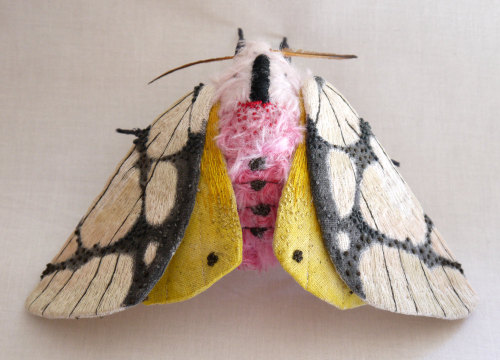

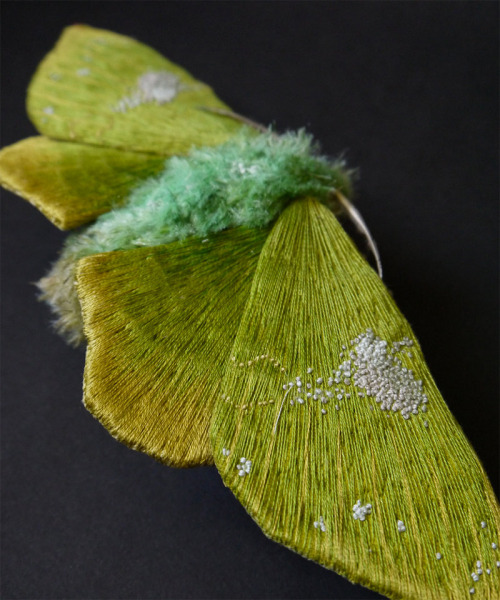

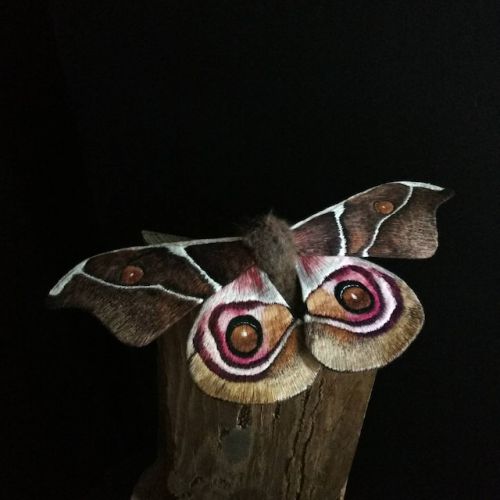
The effort!! The texture!!! Super cool :)
Her etsy:
https://www.etsy.com/shop/irohandbags/sold?ref=shopinfo_sales_leftnav
Lovely Moth Photos by Emmet Gowin

Undescribed Megalopygidae moth

Cresera intense
Family: Erebidae
Distribution: French Guyana, Brazil, Amazon region

Eubergia caisa
Family: Saturniidae
Distribution: the Cerrado (Paraguay, Bolivia and Brazil)

Psilacron gordiana
Family: Notodontidae
Distribution: Colombia, Ecuador, Peru, Bolivia

Vine Sphinx (Eumorpha vitis)
Family: Sphingidae
Distribution: Northern Argentina, Central America, West Indies, Mexico, Southern USA

Undescribed Pterophoridae moth

Neorcarnegia basirei
Family: Saturniidae
Distribution: unknown

Psilopygida walkeri
Family: Saturniidae
Distribution: unknown

Orodesma apicina
Family: Erebidae
Distribution: Cuba, Central America and Florida

Moth???
In the article I drew these photos from it says it's called Mosera apollinairei but I can't find any info on them
Moths are currently undergoing a lot of taxonomic revision so that might be why
The article says Dognin discovered them, and he worked mainly on South American moths so yeah it's probably from around there.
Moth wings - strategies to avoid predation
Hide and seek (cryptic colouration) and/or hide and seek but I dress up as the thing I'm hiding on (Wasmannian mimicry)


Pictured: a peppered moth and a wave sphinx moth
'Yeah I'm poisonous, look at my scary bright colors' (aposematism) and/or 'Yeah I'm poisonous, I'm similarly coloured to another poisonous moth which you've eaten before so no need to eat me' (Mullerian mimicry)


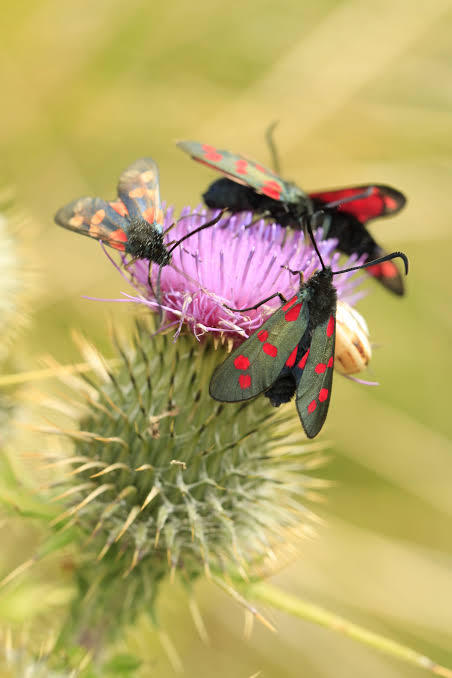
Pictured: a female leopard magpie moth, a garden tiger moth and several six-spot burnet moths
'Duh I'm poisonous!! I look like [insert other poisonous insect or animal], but please don't test your theory by biting me otherwise you'll find out I'm not actually poisonous' (Batesian mimicry)



Included in the medley: a wasp mimic (male red oak clearwing), a bumblebee mimic (snowberry clearwing) and a spider mimic (a petrophila species)
Image sources:
Sidenote: I hate formatting posts on mobile eeghhhh
https://le.kloofconservancy.org.za/lockdown-an-opportunity-to-appreciate-your-local-biodiversity/
Moths?
Moths? Moths. Moths moths moths :)









If you live in the uk and want to identify a moth you saw, or if you don't but just want to appreciate some cool uk moths, this site is for you
It lets you enter country, size, colour and any special features of the moth you want to find

^ a little fella I found while looking around on it (merveille du jour)
Love love love these spaceship lookin silly guys

Image source: x
Is the atlas moth really the biggest moth out there? (spoiler alert: there are different ways of measuring 'big')
Largest by wingspan - the white witch moth:
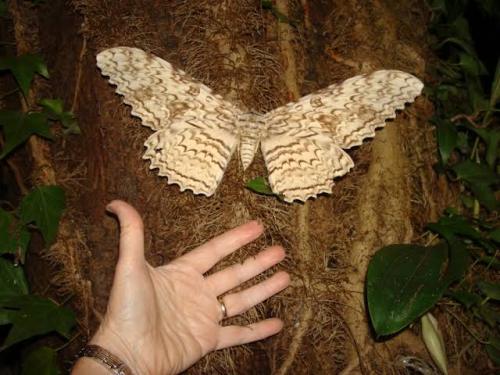
Wingspan: around 30 cm max
Fun fact: despite its large size the eggs, pupa and caterpillars of this moth remain undocumented. Check out the white witch watch for more info.
Largest by wing area - the female hercules moth:
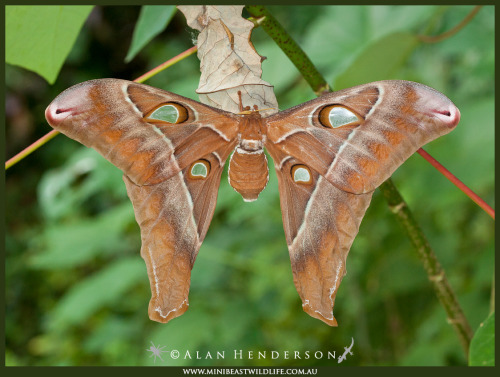
Wing surface area: 300 square cm
Largest by weight - the female giant wood moth:
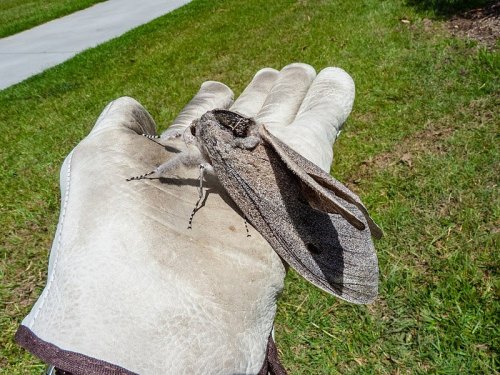
Weight: 30 g max
Largest overall - the female atlas moth:

Wingspan: largest recorded 30 cm
Wing area: 157 square cm, according to this site, which doesn't cite any source for that info
Although it's listed in the guiness book of world records as the largest moth, I'm confused as to why that is. The wingspan of the white witch moth is bigger, and the wingspan of the hercules moth is bigger, according to Insect Biodiversity: Science and Society by Robert G. Foottit and Peter H. Adler. The wing surface area of the hercules moth is also bigger according to Amazing Numbers in Biology by Rainier Flindt.
Note on conflicting information: Many of the general use sites I happened upon while trying to find sources closer to the primary source incorrectly quoted this article, sometimes saying Attacus caesar has the second largest wingspan of all moths, and sometimes incorrectly quoting the atlas' moth wingspan as 24 cm or 27 cm when it was 262 mm/26.2 cm in the original article. In my opinion, the atlas moth can't rightfully be called the largest overall moth, but it does hold the record, with the largest wingspan recorded being 30 cm (in the guiness world record).
Image sources:
[1] [2] [3] [4]
Information sources:
White witch wingspan
Hercules moth wing surface area and wingspan
Giant wood moth weight
Atlas moth

this is a pic from a while ago, but I've always kinda wondered what it was. could you identify it? found in Kentucky, not sure how specific you need for location :)
This is a very pretty female imperial moth!! The males look similar just with a bit more brown on them

The caterpillars are also quite cute and can vary in colour according to which stage of growth they're in or which morph they are

Merry Chrysalis!! (to those who celebrate)

Image source: PetaPixel

Found this pretty little thing a while ago
Any idea what it is?
Saw this and immediately knew it would be a sphingidae moth/sphinx moth!!
This here is a blinded sphinx. They sometimes expose their eyespots, which look like this:

And the reason they're called a blinded sphinx is because their eyespots have no pupil.
Super cool :)
(credits to insectidentification.org for that info bc while I didn't directly quote their website and I'm sure the information isn't exclusively 'theirs', there was a very strongly worded footnote abt plagiarism and i am afraid they will hunt me down)


Insects that have a primary color of white, from the Montreal Insectarium
Hey so i suspect this moth is Nephele subvaria, which as you can see in the photo below (the photo is of a female btw, they have slight sexual dimorphism) has large wings and the white spots and stripes on its body that you spoke about. According to wikipedia it doesn't occur in NSW but according to an australian site it does so...

or it could be Coequosa australasiae, which looks like this:

Another thing i want to say is that you likely didn't see a snowberry clearwing, bc to my knowledge they haven't been recorded in Australia. It was probably a gardenia bee hawkmoth (cephonodes kingii), which looks similar.

These are all members of the family Sphingidae, some of which, like the hummingbird hawkmoth and gardenia bee hawkmoth, had a bit of a convergent evolution moment and therefore fly in a similar way to hummingbirds.
For identification of local species i dont recommend google as it tends to be biased towards America and Europe, but try inaturalist, a field guide or a local site, like this australian lepidoptera site, which i found nephele subvaria on.


Can you help me identify this moth?
This are screenshots from a video my mum took yesterday, of this moth that I've been unable to identify. It was a pretty big moth in my opinion, as I'd never seen a moth that big before lmao. It was flying like how hummingbirds fly, which is why you can't really see the wings properly. The body is a light brown, the top wings are the same light brown, with a small white spot on each of them, and the underwings are orange. It's butt has bands of darker brown on it, and it clearly has long antenna.
For context: I live in northern NSW Australia, however I have previously seen and been able to correctly identify a different moth species that looked somewhat similar to this one, which was a North American moth called the Snowberry Clearwing, which also appeared on the same exact bush today, after having seen this mystery moth a day before. I'm not sure if this moth could be a North American moth or an Australian moth, but the unidentified moth in these pictures is a bit larger than the Snowberry Clearwing.
World like this needs more butterfly/moth photos in it. Here’s a few of mine.
Salt marsh moth, Estigmene acrea



Sachem Skipper, Atalopedes campestris


Pearl Crescent, Phyciodes tharos

Eastern Tailed-Blue female, Cupido comyntas


Bent-Line Dart, Choephora fungorum

